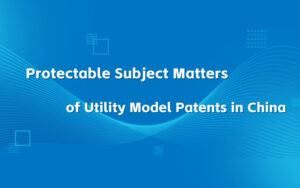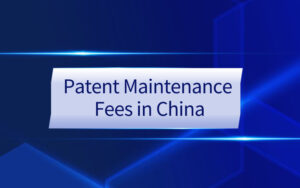Preliminary Examination of Design Patent in China
In our previous article, we have provided some general introduction of Chinese design patent application. Here, we will offer a more detailed explanation regarding the preliminary examination of design patent in China of design patent application in China.
Design patents can be acquired with relative ease in China, because they are not substantively examined. The China National Intellectual Property Administration (CNIPA) only conducts preliminary examination on design patent applications to confirm that the drawings and description meet formal requirements. CNIPA does not attempt to determine if the design is the same as or similar to prior art. That sort of examination only takes place if the design patent is challenged.

According to Article 40 of the Patent Law of China, where it is found after the preliminary examination that there is no reason to reject the application for patenting a design, the patent administrative department of the State Council shall make a decision to grant a patent for the design, issue the relevant patent certificate, and register and announce it. The patent right for design shall become effective as of the date of announcement.
Scope of the Preliminary Examination
- formal examination of the application documents;
- examination on obvious substantive defects of the application documents;
- formal examination of other documents, including whether or not other documents formalities relating to the application are in conformity with relevant provisions;
- examination of the relevant fees, including whether or not the fees have been paid.
Principle of the Preliminary Examination
In the procedure of preliminary examination, the examiner shall abide by the following principles of examination.
- Principle of confidentiality
In the patent application examination and approval proceedings, the examiner shall be obliged to keep secret the patent application documents and other patent application related contents that are not announced, and other information that is not proper to be made known in accordance with the relevant provisions on secrecy.
- Principle of written examination
The examiner shall examine on the basis of the written documents submitted by the applicant. The Office Action (including Notification of Make Rectification) and the result of examination shall be sent in written form to notify the applicant. In the preliminary examination procedure, no interview shall be held in principle.
- Principle of hearing
Before making a decision of rejection, the examiner shall notify the applicant of the facts, grounds, and evidence for rejection, and give the applicant at least one opportunity to make observations and/or amend the application documents. When the examiner makes a decision of rejection, the facts, grounds and evidence for rejection shall have been notified to the applicant, and the decision shall not contain any new facts, grounds and/or evidence.
- Principle of procedural economy
Where in conformity with provisions, the examiner shall improve the efficiency of examination as much as possible, and shorten the examination period. With regard to the application with defects that can be eliminated through rectification, the examiner shall conduct a comprehensive examination and do his best to point out all the defects in one Notification to Make Rectification. With regard to the application with substantive defects that can be eliminated through amending ex officio, the examiner may not issue Notification to Make Rectification.
Procedure of the Preliminary Examination
- Notification to grant patent right
Where it is found after preliminary examination that there are no grounds for rejection of the application for design, the examiner shall make Notification to Grant Patent Right for Design. The application for design for which the patent may be granted includes the application which complies with the requirements of the preliminary examination without the necessity of rectification and the application which complies with the requirements of the preliminary examination through rectification.
- Rectification of application documents
During the preliminary examination, for a patent application whose application documents have defects that can be eliminated through rectification, the examiner shall conduct a comprehensive examination and issue Notification to Make Rectification. Where the defects still exist in the application documents after the applicant makes rectification, the examiner shall issue another Notification to Make Rectification.
- Handling of obvious substantive defects
During the preliminary examination, for a patent application whose application documents have obvious substantive defects that cannot be eliminated through rectification, the examiner shall issue the Office Action.
The applicant shall, after receiving the Notification to Make Rectification or the Office Action, make rectification or observation within the specified time limit. The amendment to the application documents shall be made concerning the defects indicated in the notification or Office Action, and shall not go beyond the scope of the disclosure contained in the drawings or photographs filed on the date of filing.
- Rejection of applications
Where obvious substantive defects exist in the application documents and remain unrectified after the applicant makes observations or amendment upon examiner’s issuance of the Office Action, or where formality defect exist in the application documents and remain unrectified after the applicant makes observations or rectification upon the examiner’s issuance of Notification to Make Rectification twice in respect of said defects, the examiner may make a decision of rejection.
- Amendment made by applicant on his own initiative
With regard to the amendment made by the applicant on his own initiative, the examiner shall first examine whether or not the date of amendment is within two months from the filing date. With regard to the amendment made two months later, if the amended documents remove the defects existing in the initial application documents, and have the prospect of being granted the patent right, the amended documents may be accepted. The amendment shall not go beyond the scope described in the initial description and claims.
- Amendment made by Examiner Ex Officio
The examiner may make amendments to the obvious clerical mistakes and symbol mistakes in the documents of patent application Ex Officio. The amendment made by the examiner shall be recorded in the documents and be notified to the applicant.

